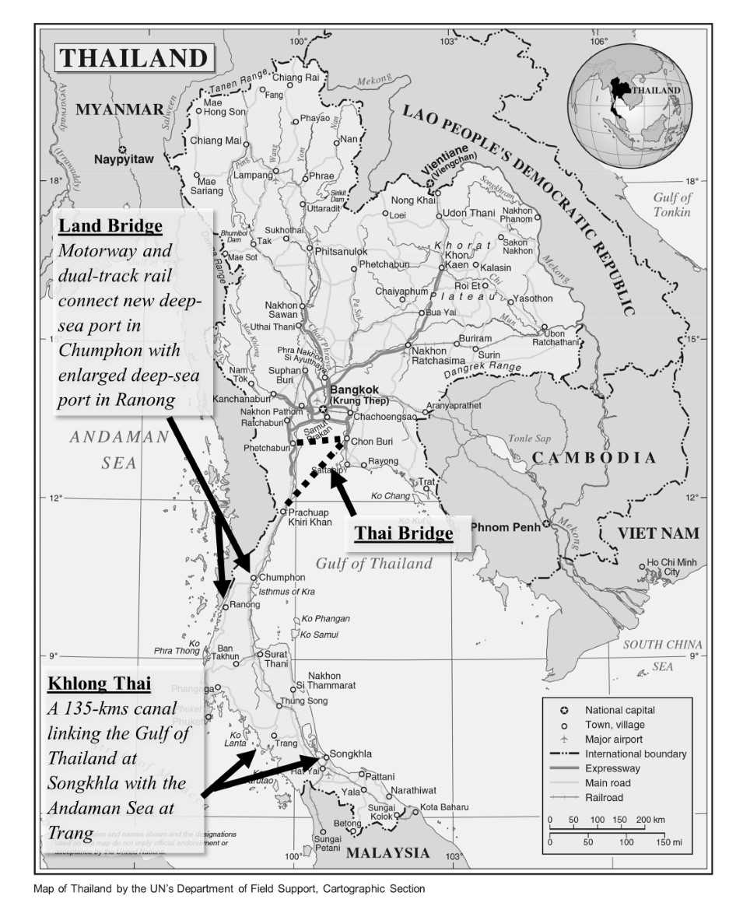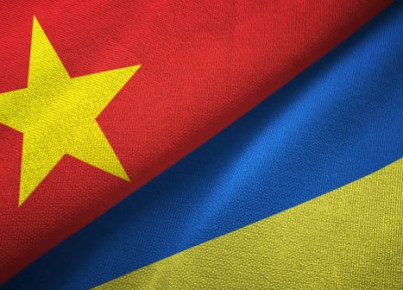As the idea of constructing the canal is (for now) gradually discarded, new options arise. Here is why.
For centuries, Thailand has dreamed of a passage across the Kra Isthmus, which divides the Malay Peninsula in two, separating the Andaman Sea from the Gulf of Thailand.
The isthmus, in its narrowest part, is only 44 km long and building an east-west route across the isthmus would reduce by about 1,200 km the distance that merchant ships must travel in transporting goods from Asia to the Middle East and Europe. Currently, the only option is to sail south to the Strait of Malacca, the busiest strait in the world, extending the journey by two days. In fact, more than 94,000 ships cross this strait every year, and it is estimated that about a quarter of the goods exchanged worldwide pass through it, including 80% of oil and gas imports of China, Japan, and South Korea.
The idea of digging a canal across the Malay Peninsula has been revived several times over the centuries. In 1677, Narai, the sovereign from the Kingdom of Ayutthaya, asked France to conduct a feasibility study for a canal and Ferdinand de Lesseps, the French diplomat involved in the construction of Suez Canal, personally visited the Kra Isthmus in 1882. More recently, the Prime Minister Thaksin Shinawatra had taken over this project, but the idea vanished with the 2006 coup. There was also a mounting pressure from China to continue the project and incorporate it into the Belt and Road Initiative given Beijing’s interest in solving the so-called “Malacca Dilemma” and strengthening its political and economic position within the region. Consequently, although the Chinese government refrained from making official claims, China and Thailand signed a Memorandum of Understanding (MoU) canal project in Guangzhou in 2015.
However, despite several proposals and studies on the feasibility of the canal, the idea was gradually discarded given its prohibitive cost (estimated at about 30 billion dollars) and the technical difficulties in connecting the two seas, which differ by several meters in elevation. Moreover, concerns emerged on the possible environmental and political repercussions. More specifically, it should not be underestimated that an infrastructural project of this size involves serious disruptions to local ecosystems, and the consequences that the excavation of the isthmus would produce in the Indo-Pacific dynamics following the opening of a new connection are not yet certain. Finally, the southern part of the proposed country has seen the mounting tension between the Buddhists and Muslims ethnicities, and it is feared that the construction of the Kra Canal could endanger national cohesion, creating a further division, even physical, within the country.
Acknowledging these problems but not giving up the idea of a passage between the Gulf of Thailand and the Andaman Sea, the government has decided to change its strategy and what was once the dream of a canal is being transformed into the project of a land bridge. This new proposal, which appears technically and economically more feasible than the previous one, would include the construction of a deep-sea port in the province of Chumphon, on the Gulf of Thailand, and the expansion of the existing port of Ranong, on the Andaman Sea. The two ports would then be connected by a double-track railway and a motorway. According to a report published in January 2021 by the ISEAS-Yusof Ishak Institute, the construction of the land bridge would cost 60 billion baht (1.85 billion dollars), or just 3% of what the canal would require.
Hence, Prime Minister Prayuth Chan-Ocha and Transport Minister Saksayam Chidchob seem increasingly leaning towards this option. Furthermore, at a time of economic uncertainty caused by the COVID-19 pandemic, the government hopes to be able to use this infrastructure to revive the economy and attract private capitals. Moreover, the project would fit perfectly into the East Economic Corridor (EEC) strategy and studies have been commissioned to also evaluate the possible connection between the new route and the high-speed China-Laos-Thailand, the signature project made possible from the funds allocated in the country under the Belt and Road Initiative.
Therefore, it followed that already in September 2020 the executive ordered a feasibility study of the land bridge and the related complementary infrastructures, to be completed in 2023. The eyes of the whole region, and of China, are on this potential future megaproject, which has been long yearned for, yet remains very delicate given the fragile balance of the Indo-Pacific.






